Cob House Pros And Cons – Everything You Need To Know About Cob
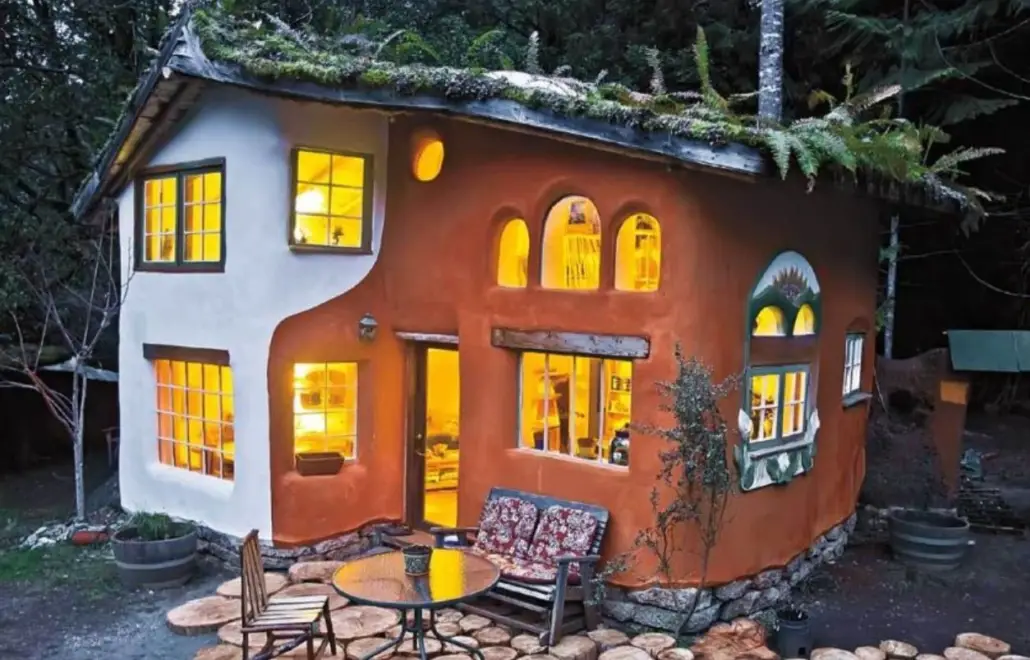
In the U.S. it’s almost unheard of for people to be living in anything that isn’t a traditional stick built home – a house made of the usual materials like milled lumber, drywall and concrete.
However, a new trend is slowly making it’s way to the states after having been a staple in Europe for hundreds of years.
It’s called cob construction and in a nutshell, it provides an alternative means of housing and is safer for the environment.
A lot of people don’t realize the ecological impact of traditional home construction. It can ruin the topsoil, ravage the local environment and deplete the land of resources.
Basically, stick built homes aren’t sustainable. In the face of the numerous natural disasters ostensibly caused by our impact on the environment, more and more people are looking to stem the tide. That’s why cob construction is becoming such a popular subject.
In the following article we will be going over the finer points of cob home construction, discussing it’s history and how it can benefit you.
Cob Homes Then And Now
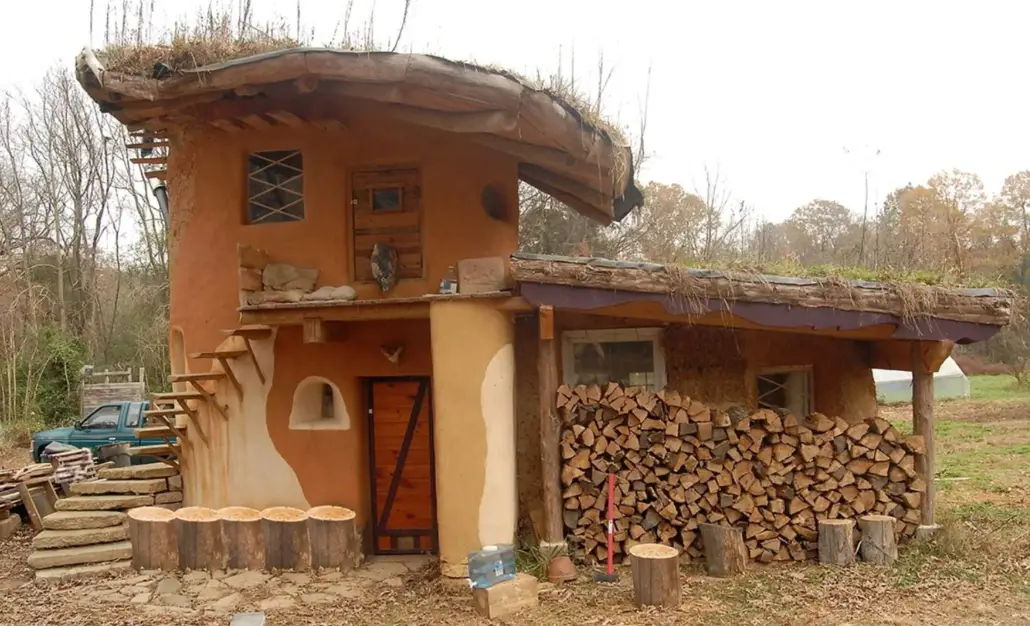
Cob construction is most readily associated with the United Kingdom.
That’s because England has one of the highest concentration of cob homes of any country in the world – even to this day.
Cob home construction was very popular in England in the 15th century.
This was back before transporting goods was too expensive for the common man to afford. People had to build their homes and barns with whatever was on-hand. This is how cob construction became so popular in the United Kingdom.
However, cob homes aren’t exclusive to England. Countries around the world have cob homes – some of them date back 700 years or more. In fact, there is evidence of cob construction being used by indigenous people independent of European influence.
Cob home construction was borne of a need for shelter when things like milled lumber and roofing materials were not readily available or cheap.
As the Brits began to colonize other parts of the world they brought the technique of cob construction with them. The technique spread to Australia, New Zealand and the American colonies that would eventually become the United States.
That’s how they started but what is their role in a modern society in which construction materials are relatively affordable and easy to transport?
Cob homes may not be as prevalent today as they were in the 15th century but they are certainly beginning to make their mark in a society that is becoming increasingly aware of it’s ecological impact.
Because cob home construction is sustainable and does not ravage the land or resources many green-centric people are using it as a means of alternative housing in the United States.
While it is unknown exactly how many cob homes are currently standing in the United States, there have been entire companies and courses based on teaching people how to build their own cob homes.
Oregon certainly has an impressive amount of cob homes while Texas and North Carolina are also home to some of the most unique cob homes in the states.
The cob homes of today don’t look very much like their ancient predecessors. That’s because cob home builders have find ways to innovate and create more unique and aesthetically pleasing cob homes.
Still, the idea is the same: build a sturdy home that has minimal ecological impact – and do it on the cheap.
How Is Cob Made?
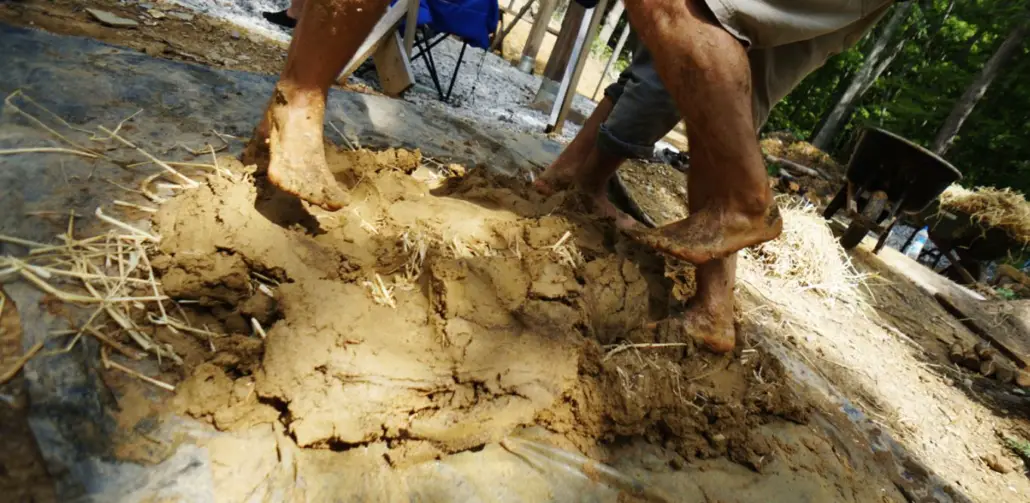
There have been different variations of cob construction but the basis remains the same.
Cob is essentially a mixture of earth, straw, sand and water. The mixture is made into a sort of mud that is compacted and used sort of like adobe bricks.
These bricks are molded and used to build entire structures. Cob can be used to build barns, chicken coops, storage houses, sheds and of course houses. Some variations of cob material also uses clay in the mixture.
However, no matter what the variation of materials includes, the trick to cob has always been finding the right ratio. The right ratio of these 3 or 4 different ingredients will produce a sturdy material that, once dry, will be as rigid and durable as concrete.
The wrong mixture will prevent the bricks from holding their form properly and will be very difficult to mold as needed. In any case, the mixture is molded by hand and foot – a similar experience to working with clay.
What Exactly Is A Cob Home?
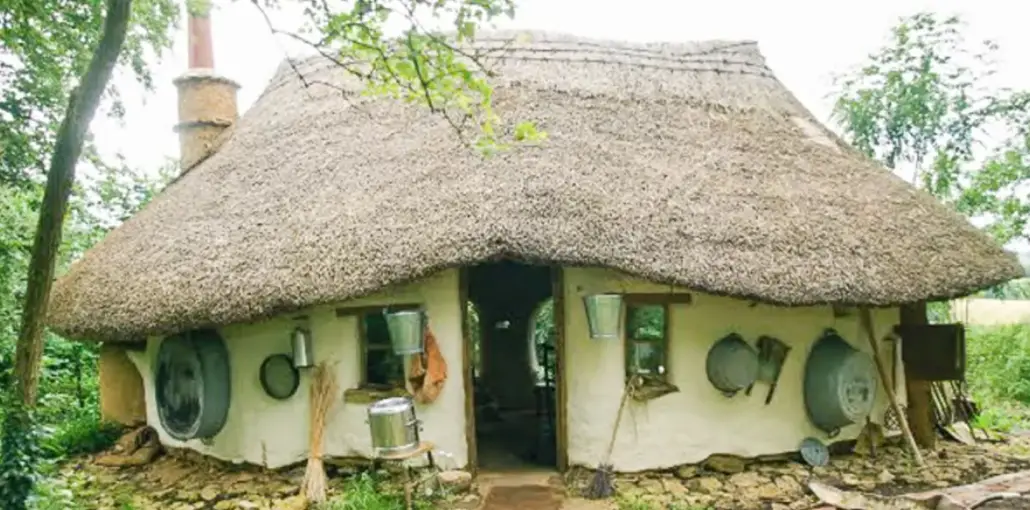
A cob home is any type of dwelling that is built from cob material. Over the years, cob homes have taken many shapes and forms.
In modern times, cob homes have also been known to incorporate modern features like manufactured windows and living roofs.
Cob homes are usually small but in other continents, they have been known to be as tall as 9 stories high. They are very common in Africa, parts of Asia, and the Arabian Peninsula.
10 Pros of Cob Housing

#1 – Cob Housing Is Durable
Some of the cob houses in England have been occupied for centuries and are still standing today. Cob housing is exceptionally durable.
One of the reasons it was used so prominently in the harsh, rainy climate of England in the 15th century is its excellent moisture resistance.
If you live in a cold and rainy climate, cob offers an exceptionally durable option for housing. Apart from being water-resistant, cob is also very hard. Once cob has dried it can be as hard and durable as concrete.
#2 – It’s Affordable
One of the things that draws people to cob housing the most is the fact that the materials and construction are so affordable.
In many cases, you can harvest a significant portion of the construction materials from your own land (sand, dirt, straw, etc.).
Even if your soil is unsuitable for cob construction or your land simply doesn’t have enough of it; you can buy these materials for much cheaper than milled wood and other typical stick built home construction material.
#3 – You Can Build Them Yourself
This sort of goes hand-in-hand with our last point because when you DIY your cob home you stand to save even more money.
However, it is a distinct advantage in and of itself because when you learn to make your own cob house, you can teach others.
Building your own cob house also allows you to take control of the design and architecture. It is a very rewarding and interactive experience.
If you have the time to commit to it, building your own cob home provides an unforgettable experience.
#4 – They Are Unique
Cob home construction tends to be very unique. And if you build your own it will surely be one-of-a-kind.
For the most part, cob homes are not built of linear materials like wood and sheet rock.
The molded earth lends itself to gentle curves and archways that give these homes a style all their own.
If you don’t fancy taking the same route as your peers, a cob home would be a great way to express your individuality through home construction.
Natural Homes has a great list of some of the coolest cob home designs to give you some inspiration.
#5 – Fire Resistance
Since there is very little wood used in cob construction these homes can be very flame retardant.
The majority of the home will be built up of compacted earth which is naturally fire-resistant.
Thanks to this natural fire-resistance, cob homes are ideal for areas where wildfires are commonplace.
Of course, if you choose to add more wood appointments to your cob house like framing and roofing, the level of fire-resistance will be compromised.
However, even heavily modified cob houses tend to be more fire-resistant than traditional stick built homes.
#6 – Cob Houses Insulate Sound Very Well
If you like to drown out the racket of the outside world or want to keep the noise you make yourself under wraps, cob is a great material.
Cob is made of a thick, dense earth mixture that retards sound very well.
#7 – Great Thermal Insulation
The molded earth that cob homes are made of work great for thermal insulation.
During the day, the cob material absorbs heat from the sunlight and retains it until the night. This is another feature that makes them a great choice for colder climate areas.
#8 – Great For The Desert Too
Cob homes also stay cool in hot climates.
While the exterior of the house may get very warm, because the material is so thick the interior walls typically stay cool to the touch.
The coolness of the interior walls radiates throughout the home creating a nice, comfortable environment even in desert climates.
In fact, cob homes tend to be more prevalent in areas of extreme heat. The American Southwest, Africa and part of the Arabian peninsula that see some of the hottest temperatures of their respective regions have high concentrations of cob-style homes.
#9 – Cob Homes Are Energy Efficient
Since cob homes stay cool in the summer and warm in the winter, they are very energy efficient.
You wont have to rely heavily on electrical heating and cooling system. While many cob homes are outfitted with electricity, residents tend to save a bundle thanks to the natural insulation of the material.
#10 – Cob Homes A For The Environment
Last but certainly not least: cob homes are much less detrimental to the environment than traditional stick built homes.
Not only do stick built homes contribute to deforestation; the manufacturing process used to build power tools contributes to air and water pollution.
One of the beautiful things about cob home construction is that at the basic level, it does not require any wood or power tools.
While some wood may be used to create door and window frames or to build siding and roofing, the amount of wood you do use will likely be much less than if you were building a stick home.
Plus, cob homes are much easier on their immediate environments. Excessive excavation is not required for a cob home the way it is for building the foundation of a stick built home.
Therefore more of the topsoil is preserved and there is less environmental impact on local plant and wildlife.
5 Cons of Cob Housing
#1 – Moisture Levels
When your cob home is first built, there will be a lot of moisture in the home.
You usually have to let your cob home cure (dry out) for a matter of months before you can move in.
#2 – It Takes Time
You may be able to build your own cob house but be ready to set aside months or even a year.
Cob construction (depending on how much skilled labor you have for help) is very labor-intensive and time-consuming.
#3 – Building Permits
Depending on where you live in the United States, it may be very difficult (if not flat-out impossible) to get a building permit for your cob house.
#4 – Limited Financing
Most financial institutions will not provide you with a loan to build a cob house.
Cob housing is still seen as an “extreme” means of housing so most lenders will not touch the mortgage.
#5 – Limited Help
If you do need help building your cob house you may have a hard time of finding it.
That’s because few builders specialize in cob home construction.
How Much Do Cob Houses Cost?
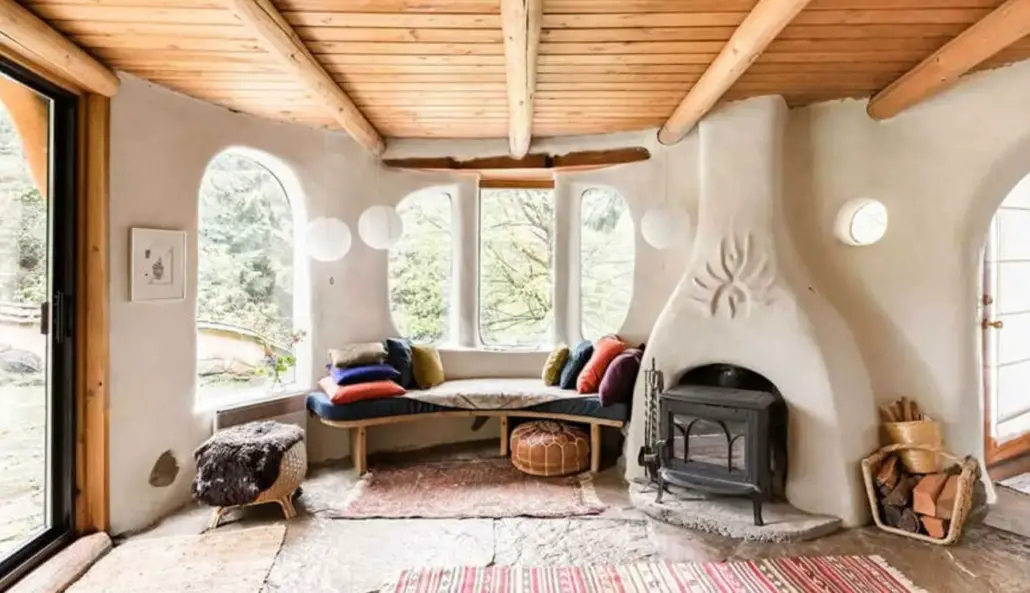
The price of yours will depend on the size and features you want.
In general though, cob homes can cost anywhere between $3000 and $10000.
Bigger houses can cost more but a lot of the cost will be in direct labour.
How Long Does Construction Take?
Construction can take a long time because layers of cob need to dry before more layers are added.
Mixing Cob is also a time consuming process
Then, the house has to cure or dry. It can take 15 months to 2 years.
How Long do Cob Houses Last?
With minimal maintenance, cob houses can last for hundreds of years.
One of the oldest cob houses on the planet has been standing for 1,000 years!
Are They Safe?
Cob houses provide good protection against the elements and even promote healthier indoor air quality.
Where are They Usually Found?
Cob houses are typically found in areas where heavy rain or extreme heat are normal.
Britain, the Pacific Northwest and parts of Africa are all places where cob homes can be found.
Cob House FAQ’s

Are Cob Houses Mortgageable?
Cob houses are mortgageable in some parts of the world like the UK.
But US lenders tend to be much more reluctant to provide loans.
Is A Cob House Waterproof?
Yes, cob is naturally water-resistant. Plus you can add roofing and siding to help shore up it’s defenses.
What Happens When A Cob House Gets Wet?
Cob is vapor permeable which means it allows water to soak through to a certain degree but is also able to release it back into the air.
Can You Make It Waterproof?
Yes. Many people outfit their cob homes with modern-style roofs to enhance their water-resistance.
Does Cob Wash Away?
Cob does not wash or erode away in the rain because it is porous and releases moisture once it’s dry – much like concrete.
How Thick Should Cob Walls Be?
It can vary depending on preference, climate and material availability but in general, cob home walls are about 24 inches thick.
Can Cob Houses Be Built In Cold Climates?
Yes. Cob homes perform very well in cold climates because they provide natural thermal insulation.
Do Cob Houses Need Insulation?
Not much, if any. The walls are thick and provide natural insulation.
Can You drill Into Cob Walls?
You can but it best kept to a minimum.
Excessive drilling can compromise the integrity of the cob.
Are Cob Houses Damp?
Not if they have been properly cured. If they have had enough time to dry, cob houses shouldn’t be damp.
How Long Does It Take Cob To Dry?
It depends on the mixture and the size of the home. It can take 15 months or more to dry.
Can Cob Be Painted?
It is not a good idea to paint cob walls because cob is supposed to be vapor permeable to allow moisture to escape. Paints can prevent cob walls from releasing moisture.
What States Allow Cob Houses?
Cob houses are allowed in states like Oregon, California, Texas and North Carolina. Other states may also allow them in certain counties.
Last Word On Cob Houses

There’s a reason cob homes have been around for centuries: they are a legitimate form of housing.
Today we would call a cob home a type of alternative home but many modern people don’t see any other way to live.
Cob homes are economical, they are easy on the environment and they provide a unique living experience for those looking to take the unbeaten path.
We hope we have provided you with valuable insight into the history and modern practicality of cob homes.


